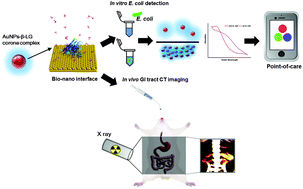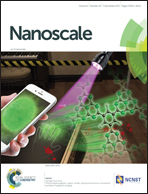Probing the modulated formation of gold nanoparticles–beta-lactoglobulin corona complexes and their applications†
Abstract
Understanding the interactions between proteins and nanoparticles (NPs) along with the underlying structural and dynamic information is of utmost importance to exploit nanotechnology for biomedical applications. Upon adsorption onto a NP surface, proteins form a well-organized layer, termed the corona, that dictates the identity of the NP–protein complex and governs its biological pathways. Given its high biological relevance, in-depth molecular investigations and applications of NPs–protein corona complexes are still scarce, especially since different proteins form unique corona patterns, making identification of the biomolecular motifs at the interface critical. In this work, we provide molecular insights and structural characterizations of the bio-nano interface of a popular food-based protein, namely bovine beta-lactoglobulin (β-LG), with gold nanoparticles (AuNPs) and report on our investigations of the formation of corona complexes by combined molecular simulations and complementary experiments. Two major binding sites in β-LG were identified as being driven by citrate-mediated electrostatic interactions, while the associated binding kinetics and conformational changes in the secondary structures were also characterized. More importantly, the superior stability of the corona led us to further explore its biomedical applications, such as in the smartphone-based point-of-care biosensing of Escherichia coli (E. coli) and in the computed tomography (CT) of the gastrointestinal (GI) tract through oral administration to probe GI tolerance and functions. Considering their biocompatibility, edible nature, and efficient excretion through defecation, AuNPs–β-LG corona complexes have shown promising perspectives for future in vitro and in vivo clinical settings.



 Please wait while we load your content...
Please wait while we load your content...